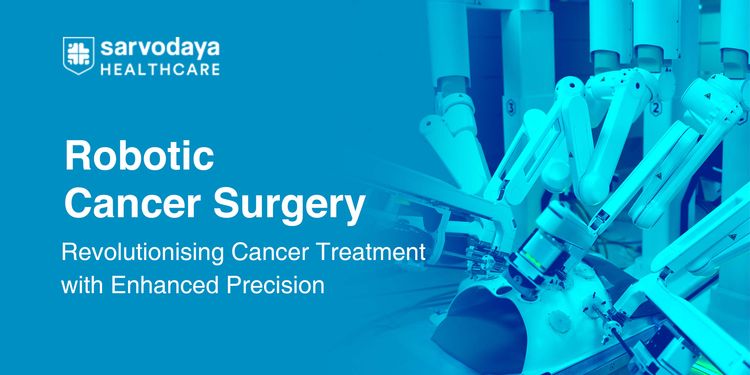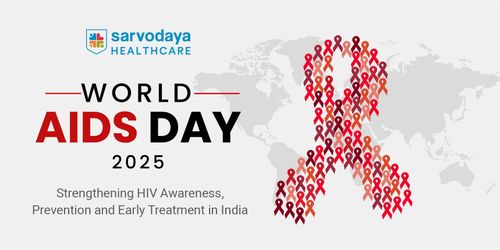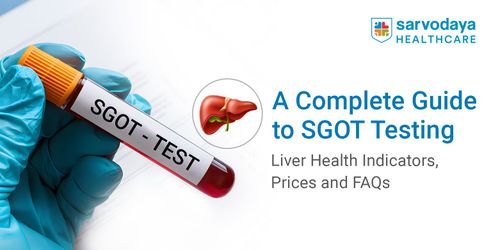Cancer treatment has advanced rapidly in the last several decades. Robotic cancer surgery is one of the most radical innovations in this field, which has introduced unmatched accuracy and control in the surgical treatment of different kinds of cancer.
In this blog, we explore how cancer treatment with robotic technology is changing patient outcomes, the advanced surgical techniques being used and the major advantages of this method over the traditional treatment methods.
Understanding Robotic Cancer Surgery
Robotic cancer surgery is an advanced technique where surgeons operate on cancer patients with the help of robotic-assisted systems to perform complex surgery with greater accuracy. Compared to traditional open surgery, robotic systems make smaller incisions and offer improved visualisation and dexterity. This makes it particularly useful for cancer located in inaccessible or sensitive regions.
This kind of surgery is commonly used to treat:
- Prostate cancer
- Colorectal cancer
- Gynaecological cancers (e.g., cervical, ovarian, uterine)
- Kidney and bladder cancers
- Head and neck tumours
Advanced Cancer Surgery Techniques Used
Advanced cancer surgery techniques use high-definition 3D cameras, miniaturised instruments and computer-assisted navigation for improved surgical precision.
Some of the equipment and technology used in robotic cancer surgery operations are:
- 3D Visualisation and Magnification: Surgeons work with a magnified three-dimensional view of the surgical field, which helps them to see the fine tissue structures and blood vessels with minute details.
- Miniaturised Surgical Instruments: Miniaturised surgical instruments are more flexible than a human hand and rotate in ways that are not possible with traditional instruments.
- Tremor Filtration Technology: The robotic system filters out unintended hand movements, ensuring greater stability in the surgery.
- Precise Tumour Dissection: Margins around the tumour can be targeted directly, which helps preserve healthy tissues and reduces the risk of recurrence.
- Minimally Invasive Ports: Small incisions limit damage to the surrounding tissue, which ensures faster healing with reduced complications.
These technologies thus ensure enhanced precision that increases the safety and success of cancer treatment with robotic technology, even for complex and delicate cancer surgeries.
Benefits of Robotic Surgery for Cancer
The benefits of robotic surgery for cancer extend beyond the increased accuracy; it provides an enhanced treatment experience overall as well.
The advantages of robotic cancer surgery include:
- Higher Precision and Accuracy: Robotic-assisted tools remove tumours with minimal damage to the surrounding tissues.
- Smaller Incisions: With less tissue damage, the patients experience reduced pain, lowered chances of infection, and minimal blood loss.
- Shorter Hospital Stay: The majority of the patients leave the hospital earlier than the ones who undergo open surgery, usually within a few days.
- Quick Recovery: As the wounds are smaller, recovery is faster, meaning they can return to their daily activities quicker.
- Enhanced surgical outcomes: The improved control and visibility lead to successful tumour removal, which may improve the long-term survival rates.
- Reduced Risk of Complications: Robotic surgery decreases the risk of complications such as bleeding, infections or wound dehiscence.
What to Expect: Pre- and Post-Surgery
The stages of cancer surgery from the pre-operative phase to post-operative care are as given below:
Pre-Surgical Phase
- Diagnostic tests are conducted, including imaging scans, blood tests, and possibly a biopsy.
- The surgeon walks you through the procedure, the expected outcome and the risks involved.
- Dietary changes or medication adjustments may also be recommended.
During Surgery
- The operation is performed under general anaesthesia using robotic systems.
- The surgeon controls the robotic arms through a console and makes small incisions to access the tumour.
- The surgery takes around 2 to 4 hours depending on the complexity.
Post-surgery Care
- You are transferred to a recovery ward to be monitored.
- The pain is treated with medications, and physical activity is encouraged to prevent complications.
- Hospital stays are usually short, averaging 2 to 3 days.
Recovery and Follow-up
- Patients are usually able to resume their normal activities within a few weeks.
- Follow-ups are regularly scheduled to track progress and to detect any signs of recurrence.
Understanding this process helps patients make informed choices and fully commit to their treatment process with their chosen robotic cancer surgeon in Faridabad.
Choosing the Right Robotic Cancer Surgeon in Faridabad
Choosing the right surgeon and hospital can make a big difference in recovery and long-term outcomes.
Consider the following factors when selecting the right institution to perform robotic cancer surgery:
- Surgical Experience: Surgeons should have done a good number of robotic cancer surgeries successfully – especially for the type of cancer you are facing.
- Technology Access: The hospital must be equipped with advanced robotic platforms and offer state-of-the-art care through cancer treatment with robotic technology.
- Multidisciplinary Support: Opt for centres in which surgeons work with a team of radiologists, oncologists, and rehabilitation specialists to provide integrated care.
- Post-operative Facilities: A skilled post-surgery care team and rehabilitation support are important for recovery and long-term health.
- Patient Reviews and Outcomes: Seek facilities that openly share statistical data on surgical success rates and patient testimonials.
Conclusion
The adoption of robotic cancer surgery is revolutionary in the field of oncology. From prostate and kidney cancers to the more complex abdominal or pelvic tumours, robotic-assisted tumour removal is proving to be a very successful option for improved surgical outcomes.
At the heart of this advancement is Sarvodaya Hospital, a trusted robotic cancer surgery hospital in Faridabad. The hospital integrates cutting-edge technology with a team of experienced specialists to provide personalised evidence-based care. The hospital practices emphasise accuracy, comfort and long-term recovery, making it the premier hospital offering cancer treatment with robotic technology.
Schedule an appointment today to inform yourself about the treatment process and access advanced facilities that will positively impact your recovery and long-term wellness.



















